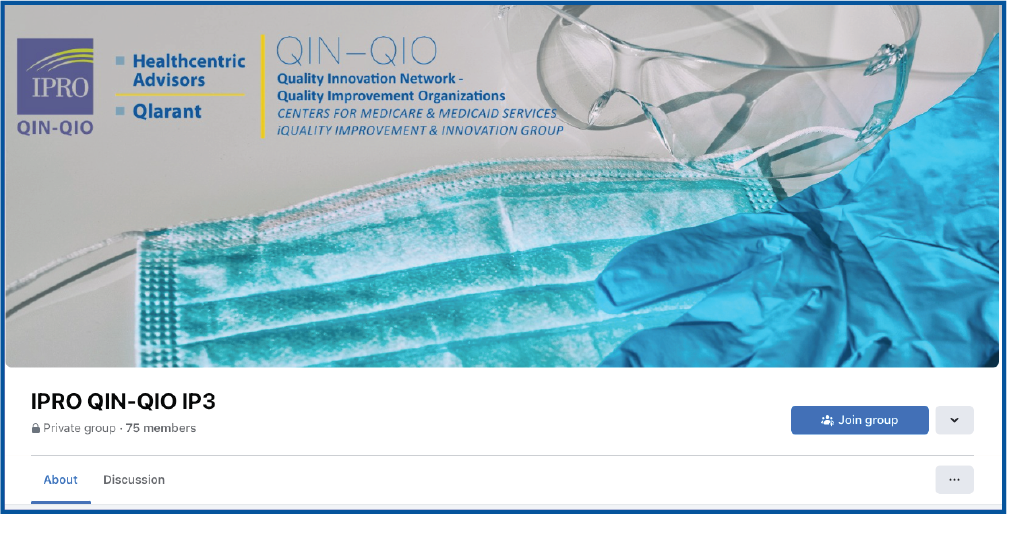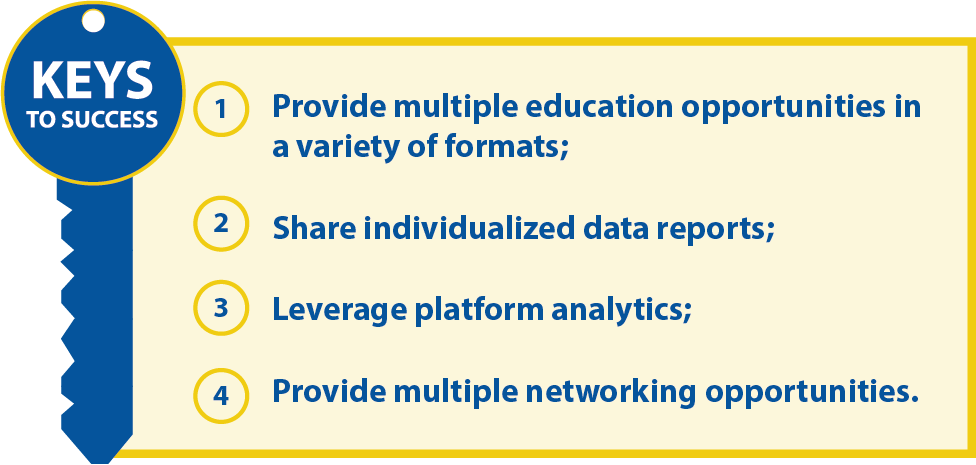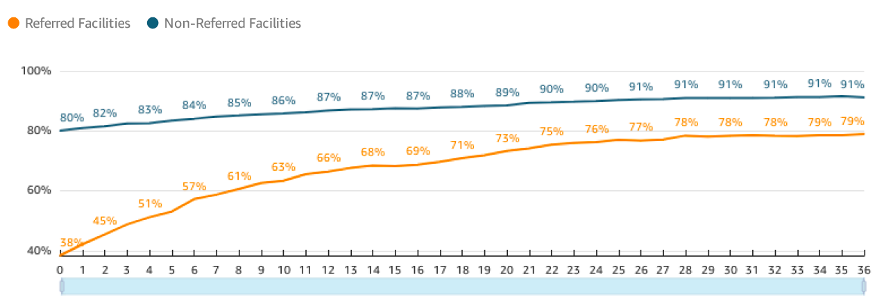Nestled among the rolling hills of New England sits a 93-bed nursing facility that is home to many of the area’s former priests and nuns. The facility, known for having embraced person-centered care long before the term was common, was struggling to increase its resident COVID-19 booster rate. The Centers for Medicare & Medicaid Services (CMS) referred the nursing home to IPRO, a CMS Quality Innovation Network-Quality Improvement Organization (QIN-QIO) for assistance. With IPRO’s help, 100% of the nursing home’s residents received a COVID-19 booster, increasing its resident booster rate by 74.4 percent from when it was first referred to the QIN-QIO and the last report to the National Healthcare Safety Network (NHSN) database in September 2022.
During initial conversations with the nursing home, IPRO learned that the facility was struggling with staff turnover – it was without an Administrator, had recently hired a new Director of Nursing (DON) and was working to fill vacancies at the unit level. The new DON, however, was committed to working closely with the nursing home’s Infection Preventionist to increase the facility’s resident COVID-19 booster rate. Understanding new staff likely needed education about the COVID-19 vaccine and booster, IPRO’s infection prevention (IP) team provided vaccine and booster resources along with coaching to the DON. The IP team also checked in monthly to identify additional needs for support. As an example, IPRO encouraged the nursing home to work closely with the local health department for assistance with booster clinics which are regularly held on site.
To further support the nursing home’s success, IPRO provided the facility with quarterly Standard Analytic Reports (SAR). The SARs summarize the nursing home’s current Quality Measure score and compares the facility’s performance to the national distribution for each measure. The report also includes graphics to give the nursing home an at-a-glance view of its trends and identify potential opportunities for improvement.
In addition to receiving one-on-one support, the nursing home participated in IPRO’s 13-week Bouncing Back weekly educational series. Each 30-minute webinar was an opportunity for the nursing home to connect with other facilities and to hear examples of successful interventions for preventing the spread of infection and increasing resident COVID-19 booster rates. On average, 230 people attended these sessions. The nursing home also attended IPRO’s 30-minute office hours sessions called IP3 – Infection Prevention by an Infection Preventionist for Infection Preventionists. Over the course of 13 weeks, the IP3 sessions averaged more than 80 attendees, more than doubling as the weeks progressed and reaching a high of 135 attendees during week 11. IPRO’s newsletter, which the nursing home receives monthly, is sent to more than 10,000 contacts and supplements IPRO’s learning sessions. With an average open rate of 23 percent, it highlights a specific COVID-19 or infection prevention resource, shares information about COVID-19 vaccines and boosters, and links to an online resource library.
 Recently, IPRO noticed that many of its nursing home contacts were opening the newsletter between 2:00 and 4:00 a.m. and began brainstorming other ways to reach nursing home staff, including social media. IPRO created a private IP3 Facebook group which currently has more than 70 members, including the facility CMS referred to IPRO for support. The purpose of the group is to provide a space for nursing home staff to share best practices and engage in discussions about infection prevention, COVID-19 vaccinations and boosters and other immunizations. Recent discussions include updates to CMS guidelines regarding visitors and how nursing homes are preparing for flu season. IPRO has seen high levels of engagement in the group which the QIN-QIO attributes to the opportunity for members to post and respond to comments at times that are convenient with their schedules.
Recently, IPRO noticed that many of its nursing home contacts were opening the newsletter between 2:00 and 4:00 a.m. and began brainstorming other ways to reach nursing home staff, including social media. IPRO created a private IP3 Facebook group which currently has more than 70 members, including the facility CMS referred to IPRO for support. The purpose of the group is to provide a space for nursing home staff to share best practices and engage in discussions about infection prevention, COVID-19 vaccinations and boosters and other immunizations. Recent discussions include updates to CMS guidelines regarding visitors and how nursing homes are preparing for flu season. IPRO has seen high levels of engagement in the group which the QIN-QIO attributes to the opportunity for members to post and respond to comments at times that are convenient with their schedules.
Keys to Success
IPRO’s success helping the nursing home achieve a 100% resident COVID-19 booster rate within six months of being referred to the QIN-QIO for assistance is a result of IPRO’s focus on meeting facilities where they are to provide education. This success can be replicated by taking the following steps:

All nursing homes in the region served by IPRO that were referred to the QIN-QIO for assistance between January 9 and September 4, 2022, saw a 26.5 percent net increase in resident vaccination/booster rates as compared to nursing homes in the state that were not referred to the QIN-QIO for assistance. In addition, the percentage of fully vaccinated and boosted residents in nursing homes in the state that were referred to the QIN-QIO for assistance, increased by 41 percent, compared to fully vaccinated and boosted residents in nursing homes not referred to the QIN-QIO, which increased by only nine percent.
IPRO QIN-QIO’s Regional Nursing Home Resident COVID-19 Vaccination/Booster Rates Including Referrals from January 9 through September 4, 2022.
The graph compares vaccination rates of CMS-referred facilities (orange) with never-referred facilities (blue) and only includes referrals made between January 9 and September 4, 2022. Never-referred facilities did not meet initial criteria for booster referral because CMS focused on facilities with significantly lower rates.

This material was prepared by The Bizzell Group (Bizzell), the Data Validation and Administrative (DVA) contractor, under contract with the Centers for Medicare & Medicaid Services (CMS), an agency of the U.S. Department of Health and Human Services (HHS). Views expressed in this material do not necessarily reflect the official views or policy of CMS or HHS, and any reference to a specific product or entity herein does not constitute endorsement of that product or entity by CMS or HHS. 12SOW/Bizzell/DVA-1115-07/18/2023

